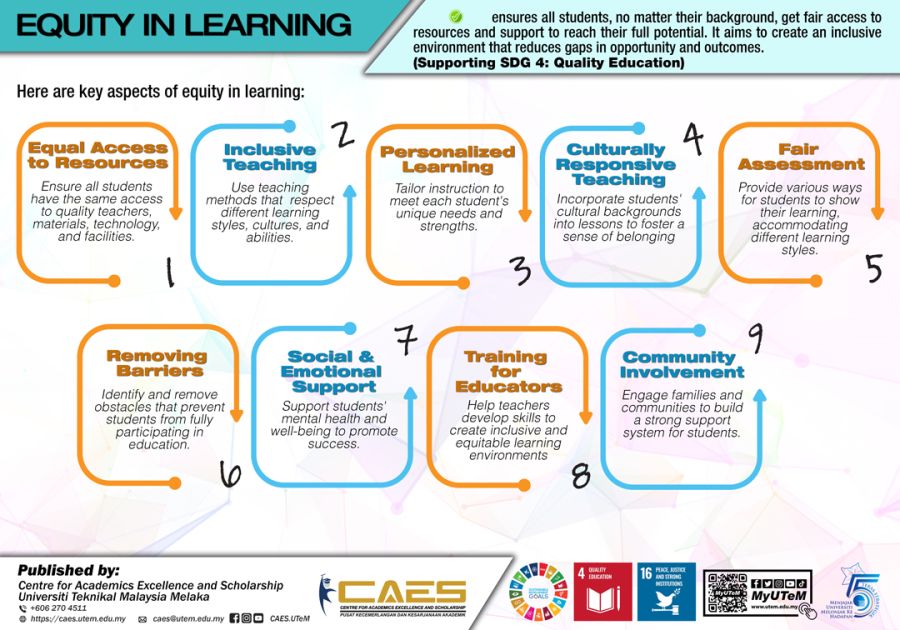INFO@CAES
September 2024

Equity in Learning
Equity in learning refers to the fair and just distribution of resources, opportunities, and support to ensure that all learners, regardless of their backgrounds or circumstances, have the opportunity to achieve their full academic potential. It emphasizes providing an inclusive and supportive educational environment that addresses and mitigates disparities in access, participation, and outcomes.
Here are key aspects of equity in learning:
-
1. Equal Access to Resources:
⦁ Ensure that all students have equal access to essential resources such as quality teachers, educational materials, technology, and facilities. This helps create a level playing field for learning. -
2. Inclusive Teaching:
⦁ Adopt teaching practices that acknowledge and respect the diversity of learners. Inclusive pedagogy involves creating instructional strategies that cater to different learning styles, cultural backgrounds, and abilities. -
3. Personalized Learning:
⦁ Recognize that students have unique strengths, challenges, and learning preferences. Personalized learning approaches tailor instruction to individual needs, providing the necessary support and challenges to each student. -
4. Culturally Responsive Teaching:
⦁ Acknowledge and incorporate students' cultural backgrounds, languages, and experiences into the curriculum and teaching methods. Culturally responsive teaching helps students see themselves in the learning process and feel a sense of belonging. -
5. Fair Assessment Practices:
⦁ Use assessment methods that are fair and unbiased, considering diverse ways in which students may demonstrate their understanding. This includes accommodating different learning styles and providing multiple assessment opportunities. -
6. Removing Barriers:
⦁ Identify and address institutional, systemic, or structural barriers that may hinder certain groups of students from fully participating in educational opportunities. This may involve policies and practices that promote equity and diversity. -
7. Social and Emotional Support:
⦁ Recognize the social and emotional needs of students and provide support systems to address mental health, well-being, and socio-emotional development. A supportive and inclusive learning environment contributes to overall student success. -
8. Training for Educators:
⦁ Equip educators with the knowledge and skills needed to create equitable learning environments. Professional development opportunities can help educators understand and address biases, implement inclusive teaching practices, and foster cultural competence. -
9. Community Involvement:
⦁ Involve families and communities in the educational process. Collaborating with parents and community members helps create a holistic support system for students and reinforces the importance of education within diverse contexts.
Equity in learning is a crucial component of educational justice, aiming to create an educational system that provides every student with the resources and opportunities needed to thrive academically and personally. It is an ongoing commitment to recognizing and addressing disparities and ensuring that education serves as a vehicle for social and economic mobility for all.
Wed 28/9/2024 10:20 AM